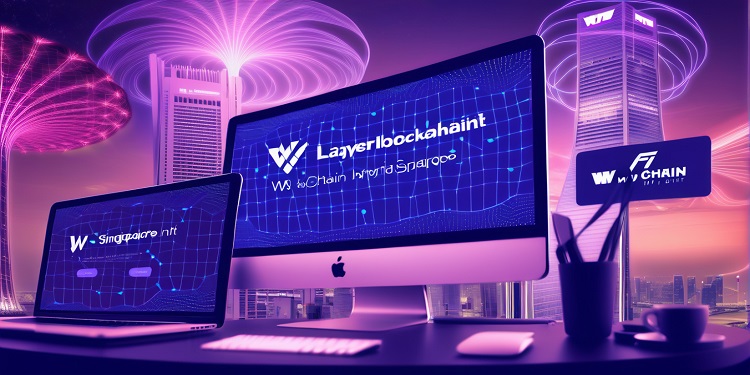In a major advancement for the use of blockchain technology in traditional finance, Siemens AG has employed J.P. Morgan’s Onyx platform to issue and settle tokenized commercial papers. This initiative represents the growing shift towards the adoption of blockchain for financial asset tokenization, also referred to as Real World Assets (RWAs). As the corporate finance landscape continues to evolve, this transaction showcases how digital solutions are beginning to transform the way businesses handle financial instruments. Experts predict that the RWA market will grow to $1.21 trillion by 2030, underlining the increasing importance of blockchain in the finance sector.
On September 13, 2024, Siemens issued €100,000 in tokenized securities under the guidelines of Germany’s electronic securities law, known as eWpG. The settlement was completed within just three days, highlighting the speed and efficiency enabled by blockchain technology. The use of J.P. Morgan’s proprietary digital currency, JPM Coin, on its Onyx blockchain network facilitated the payments. This transaction highlights the practical advantages that blockchain offers, especially in terms of streamlining financial processes and speeding up transactions that would traditionally take longer.
The settlement of the tokenized commercial papers was achieved through the collaboration of J.P. Morgan’s Onyx blockchain and SWIAT’s Delivery-versus-Payment (DvP) system. This combination was key to the secure exchange of securities and cash between the parties involved, mitigating the risks of non-settlement. By utilizing blockchain technology, Siemens was able to reduce the number of intermediaries in the transaction process and accelerate both the speed and flexibility of the settlement. This achievement represents a step forward in creating scalable financial systems that institutional clients can benefit from in the future.
Blockchain’s Role in Modernizing Finance
Blockchain technology is playing an increasingly significant role in modern finance. The collaboration between J.P. Morgan’s Onyx and SWIAT in this transaction reflects broader ambitions to transform traditional financial systems through digital innovation. Their partnership is focused on the development of new products aimed at streamlining operations for companies and financial institutions. In particular, the issuance of digital assets like tokenized commercial papers represents an opportunity for businesses to carry out cross-border transactions more efficiently and with greater transparency.
This collaboration marks Siemens and J.P. Morgan as leaders in the adoption of blockchain technology in corporate finance. Their efforts set a precedent for other organizations, as they demonstrate the tangible benefits of integrating blockchain into existing financial infrastructures. J.P. Morgan, known for its pioneering role in blockchain innovation, has been driving the adoption of this technology through its Onyx platform and JPM Coin. These tools have been designed to bring both scalability and security to financial markets, and their application in this transaction aligns with a growing industry trend toward the tokenization of RWAs such as bonds and commercial papers.
The advantages of blockchain, such as transparency, faster transactions, and lower costs, are contributing to the momentum behind this shift. By eliminating intermediaries and automating previously manual processes, blockchain technology offers a more efficient alternative to traditional financial systems, making it an attractive option for businesses looking to streamline their operations.
The success of Siemens’ transaction using blockchain highlights the broader potential for this technology in financial markets. As the technology continues to mature, more companies may follow Siemens’ lead in leveraging blockchain to issue and settle financial instruments. The efficiency gains seen in this transaction are particularly significant for large-scale institutional clients, who can now envision the future of corporate finance where transactions are not only faster but also more secure and transparent.
Pioneering the Future of Finance
J.P. Morgan’s Onyx platform and SWIAT’s Delivery-versus-Payment (DvP) system were central to Siemens’ tokenized commercial paper transaction. The DvP system is particularly important as it ensures the secure exchange of securities and cash, reducing the risks commonly associated with financial settlements. Through the tokenization of the commercial papers and the application of blockchain, Siemens was able to shorten the value chain and improve the overall transaction process. This development is indicative of how institutional financial transactions may evolve in the near future, with blockchain offering a blueprint for greater speed, flexibility, and security.
J.P. Morgan has long been a leader in blockchain-driven financial solutions, and this transaction with Siemens is further evidence of the bank’s commitment to innovation. By creating tailored blockchain solutions for its corporate clients, J.P. Morgan continues to push the boundaries of what is possible in modern finance. This initiative not only demonstrates the practicality of blockchain for everyday financial transactions but also paves the way for widespread adoption of digital financial tools across industries.
As of now, the successful completion of Siemens’ tokenized security issuance stands as a milestone in the evolving landscape of corporate finance. By leveraging blockchain, Siemens and J.P. Morgan have shown how traditional finance can be integrated with cutting-edge digital technologies to create more efficient, transparent, and scalable systems. This move signals the beginning of a future where blockchain plays a key role in transforming the way financial instruments are managed and exchanged globally.









